
Untitled
Isa Genzken

Isa Genzken, Untitled, 2006
Wheelchair, hologram foil, belts, fabric, colour print, mirror foil, 2 ceramic bowls, clips, lacquer
89 x 64 x 106 cm
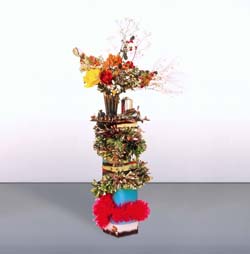
Bouquet
Isa Genzken

Isa Genzken, Bouquet, 2004
plastic, wood, lacquer, mirror foil, glass
260 x 115 x 130 cm
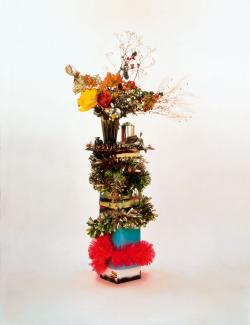
Bouquet
Isa Genzken

Isa Genzken, Bouquet, 2004
plastic, wood, lacquer, mirror foil, glass
260 x 115 x 130 cm
The column for Isa Genzken is a recurring motif: its linear purity becomes a critical field on which she explores the relations between art, architecture, design, and social experience. In her most recent work, Genzken augments her usually svelte and sophisticated formalism to create assemblages of maximum overload. Bouquet explodes as unwieldy still-life: its plinth base defiled with spray paint, adorned with garlands, topped with a menagerie of cowboys and Indians warring under an ornamental flower arrangement. Posed as a beautiful and grotesque requiem, Genzken’s sculpture references a shattered utopia, framing modernist architectural form as monument of hope and mourning.
Genzken’s
MLR painting series (1992), which the artist has said references the work of the nineteenth-century artist Hilda of Klimt, depicts gymnast’s rings frozen moments after their release in mid-air. The images invite the viewer to ponder the symbolic, allegorical act of letting go.
Her practice is mostly three-dimensional but it also embraces photography, video, film and collage, the latter finding its way into her sculptures as well as wall-based works, as part of her investigation of the way we create and read images and objects.
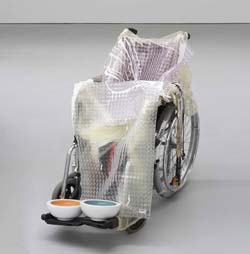
Untitled
Isa Genzken

Isa Genzken, Untitled, 2006
Wheelchair, hologram foil, belts, fabric, color print, mirror foil, 2 ceramic bowls, clips, lacquer
88.9 x 63.5 x 105.4 cm
It is for these kinds of assemblages exploring the tension between open and precise meaning that Genzken is best known. As she says, ‘There is nothing worse in art than, “you see it and you know itâ€â€¦ That’s a certainty I don’t like.’

Geschwister
Isa Genzken
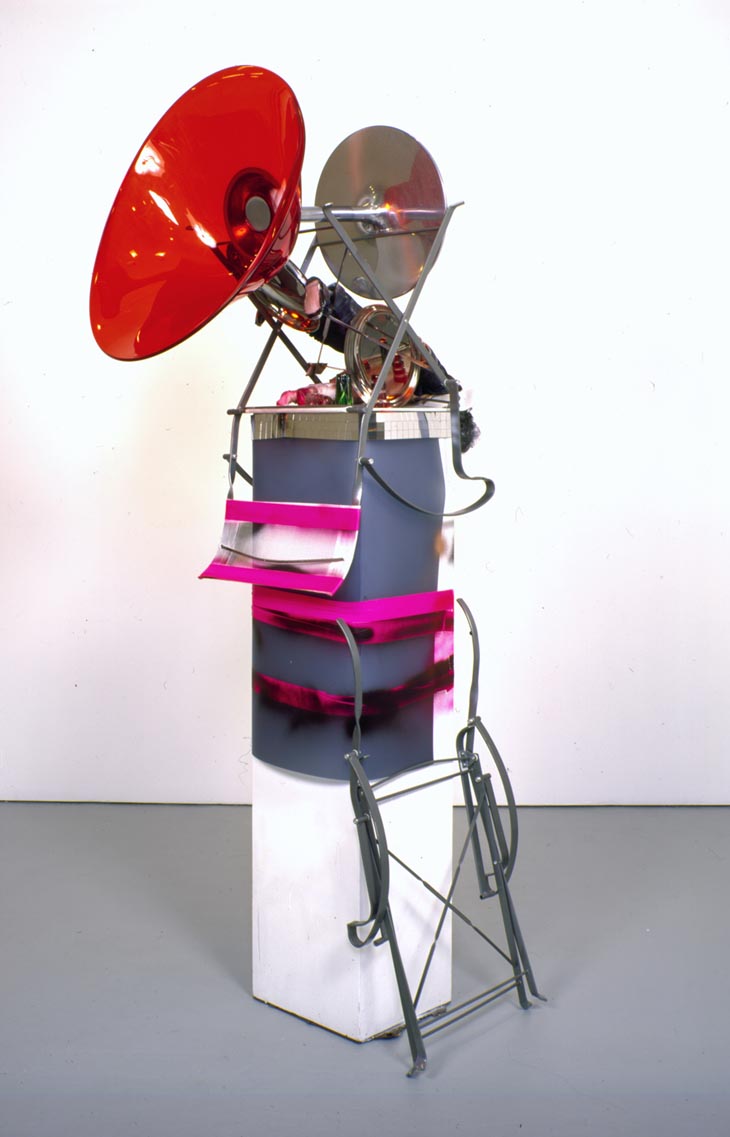
Isa Genzken, Geschwister, 2004
Plastic, lacquer, mirror foil, glass, metal, wood, fabric
220 x 60 x 100 cm
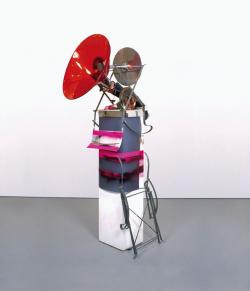
Geschwister
Isa Genzken

Isa Genzken, Geschwister, 2004
Plastic, lacquer, mirror foil, glass, metal, wood, fabric
220 x 60 x 100 cm

Urlaub
Isa Genzken
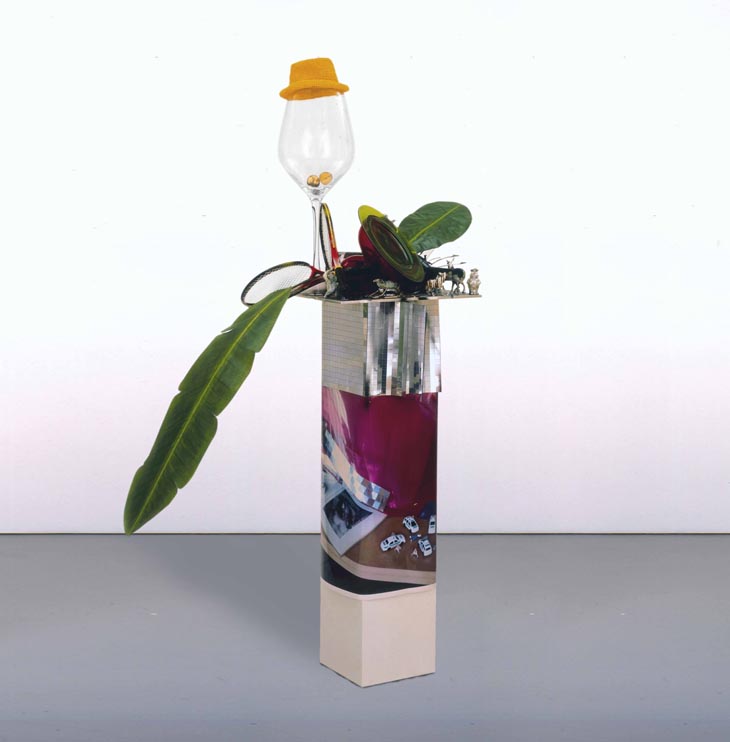
Isa Genzken, Urlaub, 2004
glass, lacquer, plastics, metal, wood, photograph
227 x 165 x 55 cm
Isa Genzken’s totemic sculptures, colourful mirrored panels and lacquered paintings articulate the artist’s mysterious method. Harvesting, fusing and re-constructing references from myriad sources, she takes an anything-goes approach to the materials she uses to convey multiple meanings in unexpected ways.
ARCHIVE: PAST WORKS
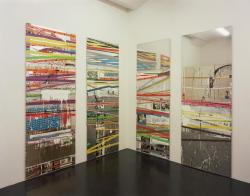
Kinder Filmen I
Isa Genzken

Isa Genzken, Kinder Filmen I, 2005
Mirror, metal, adhesive tape, magazine and book pages, stamps acrylic, lacquer, spray paint.
280 x 100 cm each panel (Wall Installation of Four Parts)
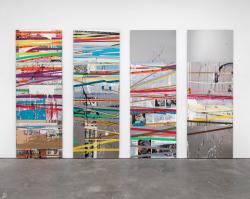
Kinder Filmen I
Isa Genzken

Isa Genzken, Kinder Filmen I, 2005
Mirror, metal, adhesive tape, magazine and book pages, stamps acrylic, lacquer, spray paint.
280 x 100 cm each panel (Wall Installation of Four Parts)
In
Kinder Filmen (2005) mirrored panels, covered in a chaotic collage of adhesive tape, magazine and book pages, lacquer and spray paint, create an illusion of space, drawing attention to the power of art to subvert our preconceptions. They are suggestive of architectural façades and the information overload of urban experience.
The oversized fake leaves and giant wine glass dominate
Urlaub (2004), inviting a surrealist-tinged, free-associative interpretation.
Bouquet (2004) is a comically uptight version of a beautiful, excessive still life as well as a memorial to modernist form. The combine plinth of
Mutter Mit Kind (2004) creates an almost sacred altar-like space, bringing together religious and minimalist symbols.
Geschwister and
Untitled (both 2004) juxtapose found objects into, respectively, a recognisable shape and a non-utilitarian re-purposing to provoke questions around given material meaning. Built around traditional notions of narrative and form, these works suggest a crudeness and frailty behind what has been human-made.



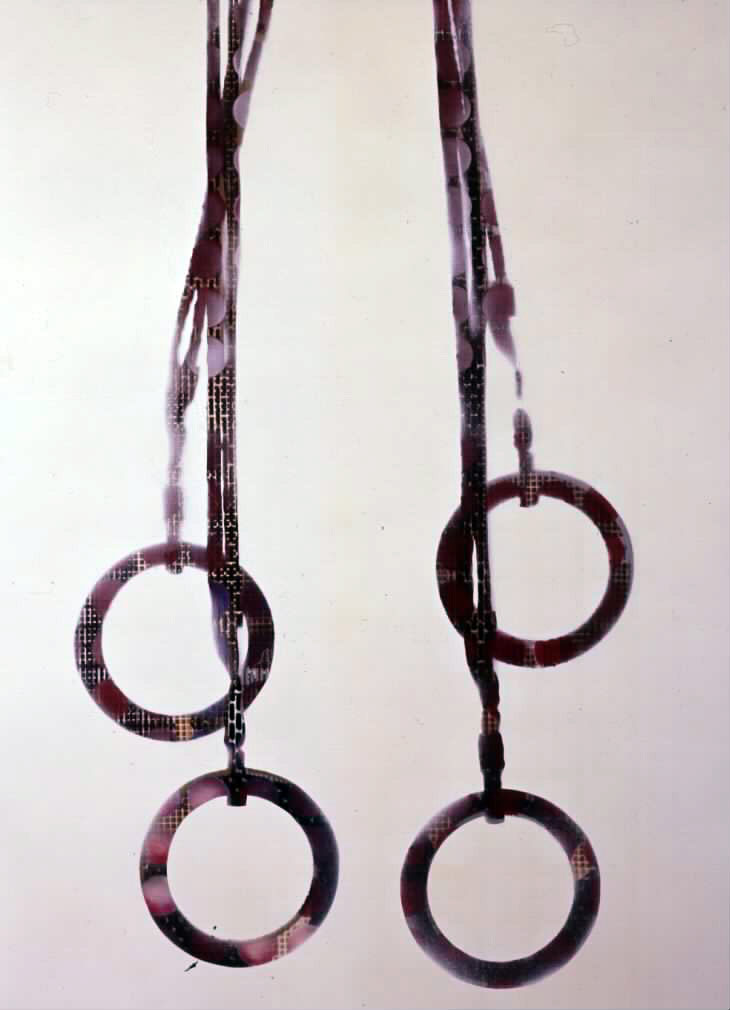
.jpg)
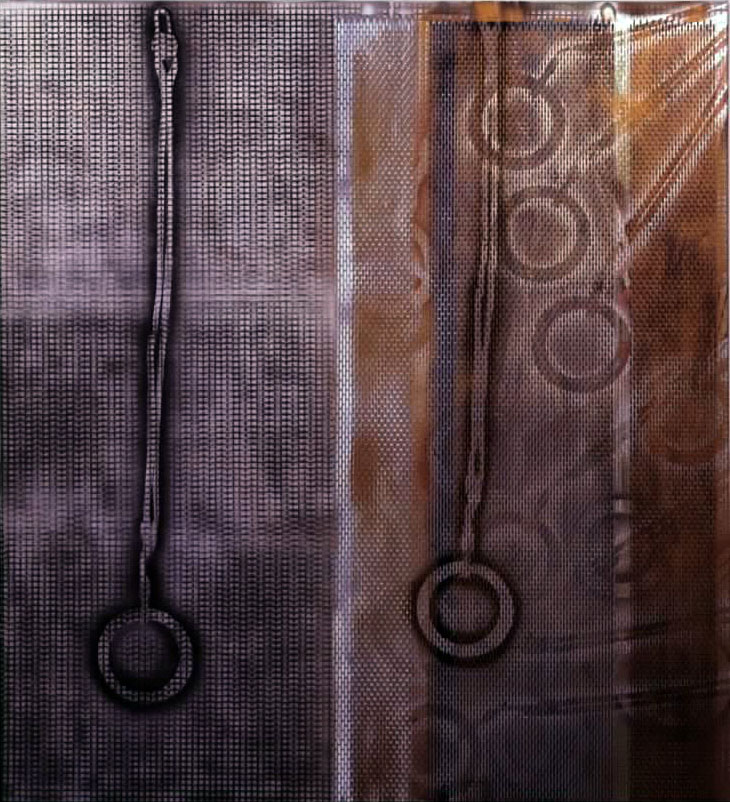
.jpg)
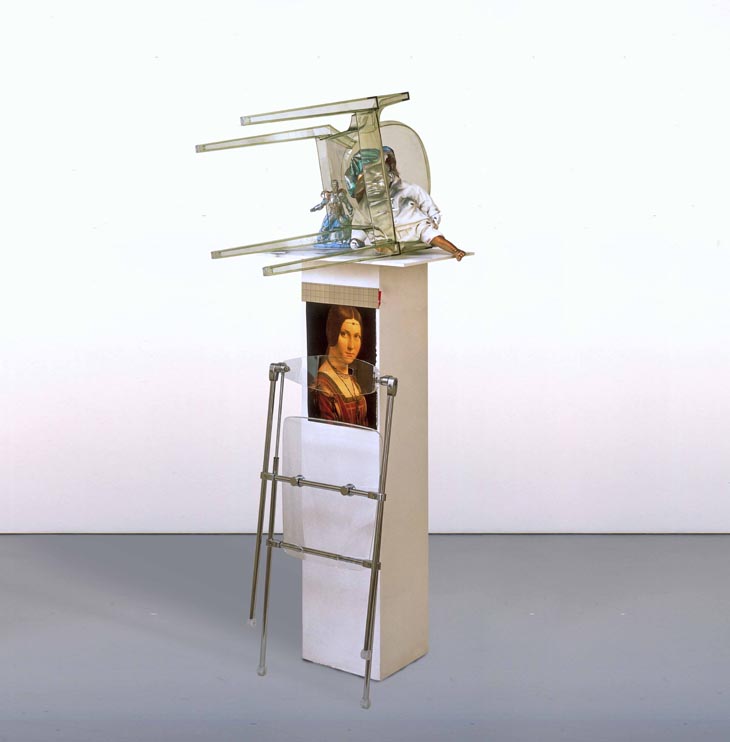







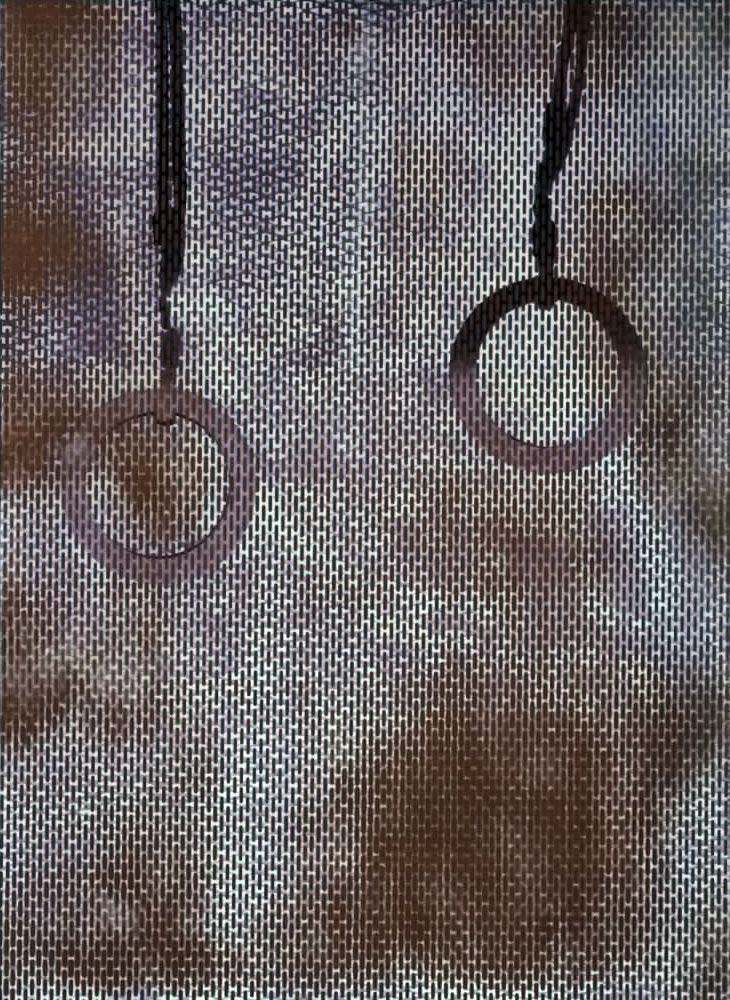
.jpg)




.jpg)

.jpg)









.jpg)